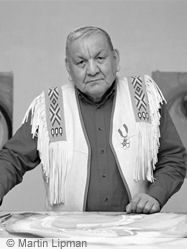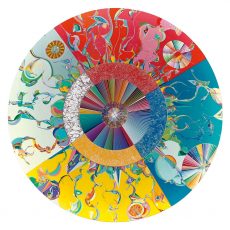Browse by Product Lines
Brands
Colors
Sizes
- 6" x 9" (1)
Formats
- Vertical (1)
Substrates
Product Lines
Subjects
- Art Card (1)
- Indigenous (1)
Tribal Affiliation
Alex Janvier

Cultural Background: Dene Suline and Saulteaux
Born in 1935, Alex Janvier was raised in the nurturing care of his family until the age of eight. At this age, the young Janvier was uprooted from his home and sent to the Blue Quills Indian Residential School near St. Paul, Alberta. Although Janvier speaks of having a creative instinct from as far back as he can remember, it was at the residential school that he was given the tools to create his first paintings. Unlike many aboriginal artists of his time, Janvier received formal art training from the Alberta College of Art in Calgary and graduated with honours in 1960.
In 1993, Morning Star, was installed at the river end of the Grand Hall of the Canadian Museum of History. Janvier titled the work Morning Star in reference to the star's use as a direction-finder. He planned the four areas of colour in the outside ring to represent periods in Native history: yellow, for early history in harmony with nature; blue, for the changes brought about by contact with European civilization; red, for revival and optimism; and white for reconciliation and a return to harmony.
As a member of the commonly referred to “Indian Group of Seven”, Janvier is one of the significant pioneering aboriginal artists in Canada, and as such has influenced many generations of aboriginal artists.
Origine culturelle: Déné suline et Saulteaux
Né en 1935, Alex Janvier a été élevé dans les soins attentionnés de sa famille jusqu'à l'âge de huit ans. À cet âge, le jeune Alex a été arraché de sa famille et envoyé au pensionnat indien Blue Quills près de St. Paul, en Alberta. Bien qu'Alex Janvier parle d'avoir un instinct créatif d'aussi loin qu'il se souvienne, c'est au pensionnat qu'il a reçu les outils pour créer ses premières peintures. Contrairement à de nombreux artistes autochtones de son époque, Alex a reçu une formation artistique officielle du Collège d'Art de l'Alberta à Calgary et a obtenu son diplôme avec distinction en 1960.
En 1993, Étoile du matin-Gambeh Then a été installé à l'extrémité de la rivière de la Grande Galerie du Musée canadien de l'histoire. Il a intitulé l'œuvre Étoile du matin-Gambeh Then en référence à l'utilisation de l'étoile comme orateur. Il a placé les quatre zones de couleur dans l'anneau extérieur pour représenter les périodes dans l'histoire amérindienne: jaune, pour l'histoire tôt en harmonie avec la nature; bleu, pour les changements apportés par le contact avec la civilisation européenne; rouge, pour le renaissance et l'optimisme; et blanc pour la réconciliation et un retour à l'harmonie.
En tant que membre du groupe communément appelé «groupe des sept indiens», Alex Janvier est l'un des artistes autochtones pionniers les plus importants au Canada et, en tant que tel, a influencé de nombreuses générations d'artistes autochtones.
Portfolio
Showing the single result
-
 Item Code: POD1347
Item Code: POD1347Morning Star
by: Janvier, AlexArt Cards/Mat/Frame/Canvas; IndigenousSize: 6 x 9 in
